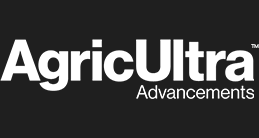UVR8 Chemical Profile Shaping in Cannabis
UVB+A light on a dynamic spectrum allows growers to develop lighting schedules that shape terpene profiles and increase other secondary metabolites. This allows them to take common genetics and develop proprietary expressions far beyond what genetics can achieve alone.
”Significant new understanding of UVB mediated processes in plants has been gained during the last decade. As a result of improved experimental design and methods, the view of UVB radiation as a damaging agent has given way to a view where UVB radiation is considered as a specific regulator of gene expression, metabolite profiles, and responses to climate change for plants growing in sunlight. Recent genetic studies have revealed the existence of UVB-specific signalling pathways in plants, and have identified several components including a photoreceptor (UVR8). The discovery of these UVB-specific signalling pathways has confirmed the contention that UVB irradiance is a specific regulatory factor in plant-environment relationships. Research on the molecular basis of UVB mediated regulatory process in plants is now yielding novel understanding of the mechanisms underlying growth and phenotypic plasticity, and consequences thereof for plant performance in crop and natural ecosystems.”
www.uv4plants.org publications/uv-and-plants
Research has proven that 285 nm UVB triggers the UVR8 pathway, which increases the production of secondary metabolites that mediate many aspects of the interaction of plants with their environment such as acting as feeding deterrents against herbivores, pollinator attractants, protective compounds against pathogens or various abiotic stresses, antioxidants, and signalling molecules.
Increased Production of Specific Secondary Metabolites in Cannabis:
Cannabinoids
Terpenoids
Flavonoids
Stilbenoids
Alkaloids
Lignans
385 nm light is on the boundary of UVA and visible light. It is proven to increase cell wall thickness and health, making the plant more resilient against intense UV, pests, mold, and mildew.
Experiments have shown that 385nm UVA light makes the UVR8 photon receptor more susceptible to the effects of 285 nm UVB which means less energy is required to effectively trigger the UVR8 pathway.
Plants exploit blue and UVA light to drive DNA repair processes. Researchers have shown that DNA damage due to UV is mostly repaired by subsequent exposure to light in the blue or UVA range of the spectrum (Ref. 12). Blue light and/or UVA exposure activate an enzyme (photolyase) that repairs damaged DNA sequences.
The advantage of this system is that when plants are exposed to UVR, there is always a lot of blue light present. The involvement of blue or UVA light in this process is known as photoreactivation. Photoreactivation is the major defence against UV-induced damage in plants.
What You Can Expect from Proper UVA Exposure
UVA-induced changes include thicker leaves, shorter petioles and stems, increased axillary branching, and altered root-shoot ratio.
A friendly warning: Not all UV is created equal.
Some lighting manufacturers include a portion of UVA in their spectrum . Although these amounts do increase secondary metabolite production to some extent, they do not effectively trigger the UVR8 chemical pathway. This specifically requires 290 to 280 nm light.
Using the correct UV wavelength is extremely important as it affects plant performance as well as operating cost. UVB requires more energy than visible light to produce.
% Increase / Decrease
over Non-UV Control Test Results
The following results show how our beta sites have enhanced cannabinoid and terpene expressions with UVB light recipes. Tests preformed with the Gen. 2 AgricUltra MetaRail UVB+A supplemental Lighting Instrument.
Strain: Power Plant
Light Recipe: A
% Increase / Decrease over Non-UV Control
Strain: Sour Diesel
Light Recipe: A
% Increase / Decrease over Non-UV Control
Strain: Sour Diesel
Light Recipe: B
% Increase / Decrease over Non-UV Control
Strain: Gorilla Glue
Light Recipe: A
% Increase / Decrease over Non-UV Control
Strain: Gorilla Glue
Light Recipe: B
% Increase / Decrease over Non-UV Control
NOTE: Lowering Terpenes can also achieve a desired effect.
MetaRail™ Supplemental UVB+A Lighting Instrument
In the hands of a capable grower, our technology is an incredibly powerful tool that can better manage facility expenditures and create cannabinoid and terpene profiles that are unique to a brand.
Learn more about the AgricUltra MetaRail.










